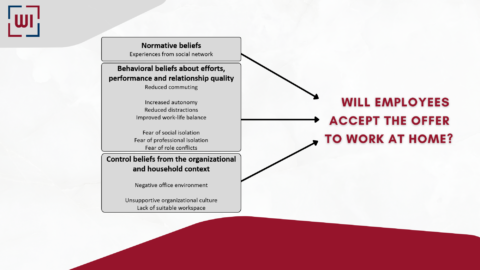Paper on adoption of home office among employees published
One challenge of telework before the Covid-19 pandemic, but even during it, is that even if organizations offer telework programs employees are not willing to work from home. Instead, they prefer to stay in the office. So, what will happen after the pandemic, when companies continue to offer home offices on a voluntary basis: will the employees accept this offer?
The paper which Christian Maier and Sven Laumer presented at the ACM SIGMIS Computers and People Research Conference 2021, offers one answer to this question. In the paper with the title “Why do People (not) Want to Work from Home? An Individual-focused Literature Review on Telework”, they conducted a literature review of 32 studies focusing on telework adoption. Based on this, Maier and Laumer developed the ETAM (employee telework adoption model) which you can see in the featured picture.
Three categories for factors can be identified, which impact employees in their decision on working from home or coming to the office: Experiences from the social network of the employee, the organizational and personal working conditions, and, most importantly, the employee’s attitude towards teleworking. This attitude can be influenced by beliefs about effort, performance, and relationship quality – for example, reduced commuting time is a factor promoting telework, while the fear of social and professional isolation are factors that foster a negative attitude towards telework and therefore hinder its adoption.
Many thanks to Christian Maier for the teamwork!
